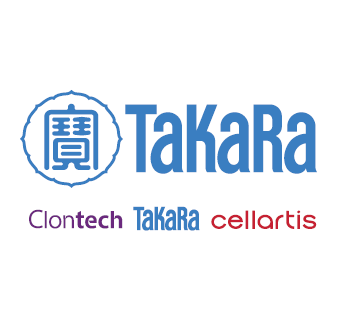Lenti-X DD Red Reporter System
Lenti-X DD Red Reporter System
The Lenti-X DD Red Reporter System includes the Lenti-X DD-tdTomato Vector Set and Shield1. The Lenti-X DD-tdTomato Vector Set includes two lentiviral expression vectors (a reporter vector and a control vector) that produce high titers of recombinant lentivirus, which can efficiently transduce both dividing and nondividing mammalian cells. The system provides enough reagents for 16 packaging reactions. The pLVX-DD-tdTomato Reporter Vector is a promoterless vector that allows you to insert your promoter of interest upstream of the red fluorescent protein tdTomato, tagged at its N-terminus with the ProteoTuner destabilization domain (DD). In the absence of the membrane-permeant ligand Shield1, the DD causes the reporter protein to be rapidly targeted to and degraded by proteasomes. This very efficient and controllable destabilization method minimizes reporter background fluorescence from leaky promoters prior to promoter activation. To analyze promoter activity, a candidate inducer is added to the medium along with Shield1, which binds to the DD tag and thereby stabilizes the reporter protein and allows it to accumulate. As a result, only the reporter molecules expressed during promoter induction will contribute to the fluorescence signal, providing a considerably higher signal-to-noise ratio than that obtained with nondestabilized or constitutively destabilized reporter systems. Cells used to monitor uninduced promoters (e.g., the negative control) will be treated with Shield1 alone.
DD-Fluorescent Protein promoter reporters provide a much greater fold increase in signal intensity than traditional fluorescent protein reporters, which do not contain the DD

DD-Fluorescent Protein promoter reporters provide a much greater fold increase in signal intensity than traditional fluorescent protein reporters, which do not contain the DD. HEK 293 cells were transfected with plasmids encoding the following reporters: CRE-tdTomato, CRE-DD-tdTomato, CRE-ZsGreen1, and CRE-DD-ZsGreen1. 24 hr later, the cells were stimulated with 10 μM forskolin and simultaneously treated with 1 μM Shield1. After 4.5 hr, fluorescence intensity was measured via flow cytometry, and fold induction was calculated. The tdTomato and ZsGreen1 reporters containing the DD had three- and six-fold greater fluorescence intensity respectively, than the versions without the DD, due to the latter’s increased background levels.
tdTomato, but not GFP, can be detected in the SCID mouse cadaver phantom model

tdTomato, but not GFP, can be detected in the SCID mouse cadaver phantom model. False-color overlay images (regions of interest encircled) indicate that the imaging system could detect tdTomato fluorescence in the cadaver model, but not GFP fluorescence. Panel A. Implanted tube with 100 x 106 MDA-MB-231-tdTomato-expressing cells, imaged with the DsRed filter set. Exposure time: 1 sec. Panel B. Implanted tube with 100 x 106 MDA-MB-231-GFP-expressing cells, imaged with the GFP filter set. Exposure time: 1 sec.
Lenti-X reporter systems are ideal for your studies with limited numbers of cells

Lenti-X reporter systems are ideal for your studies with limited numbers of cells (e.g., stem cells), or to study multiple promoter activation cycles and/or time points, in order to produce many sets of data over time. Choose systems with secreted luciferase or with on-demand fluorescent reporters.
Lenti-X chemiluminescent and fluorescent reporter vectors

Lenti-X chemiluminescent (Panel A) and fluorescent (Panel B) reporter vectors. Lenti-X vectors contain sequence elements that facilitate lentiviral packaging and/or boost expression of your reporter, including the LTRs, packaging signal (Ψ), Rev response element (RRE), and central polypurine tract/central termination sequence (cPPT/CTS) from HIV-1; and the woodchuck hepatitis virus post-transcriptional regulatory element (WPRE). MetLuc = Metridia luciferase. DD = ligand-dependent destabilization domain. FP = fluorescent protein (AmCyan1, ZsGreen1, or tdTomato).
Lenti-X reporter systems provide low background and high signal intensity

Lenti-X reporter systems provide low background and high signal intensity. HEK 293 cells were transduced with pLVX-CRE-MetLuc Reporter Vector (Panel A) or pLVX-CRE-DD-ZsGreen1 Reporter Vector (Panel B), treated with forskolin, and assayed according to the respective protocols. RLU = relative light units. RFU = relative fluorescence units.
Lentiviral on-demand fluorescent reporter vectors

Lentiviral on-demand fluorescent reporter vectors. Lenti-X vectors contain sequence elements that facilitate lentiviral packaging and/or boost expression of your reporter, including the LTRs, packaging signal (Ψ), Rev response element (RRE), and central polypurine tract/central termination sequence (cPPT/CTS) from HIV-1; and the woodchuck hepatitis virus post-transcriptional regulatory element (WPRE). DD = ligand-dependent destabilization domain. FP = fluorescent protein (AmCyan1, ZsGreen1, or tdTomato).
Ligand-dependent, targeted, and reversible fluorescent protein reporter stabilization

Ligand-dependent, targeted, and reversible fluorescent protein reporter stabilization. A small destabilization domain (DD) is fused to the fluorescent protein reporter. The small membrane-permeant ligand Shield1 binds to the DD and protects the entire fusion protein from proteasomal degradation. Removal of Shield1, however, causes rapid degradation of the entire DD-fluorescent protein reporter. The default pathway for the DD-Fluorescent Protein Reporter Systems is degradation of the DD-fluorescent protein reporter, assuring low background, unless Shield1 is present, assuring low background.


